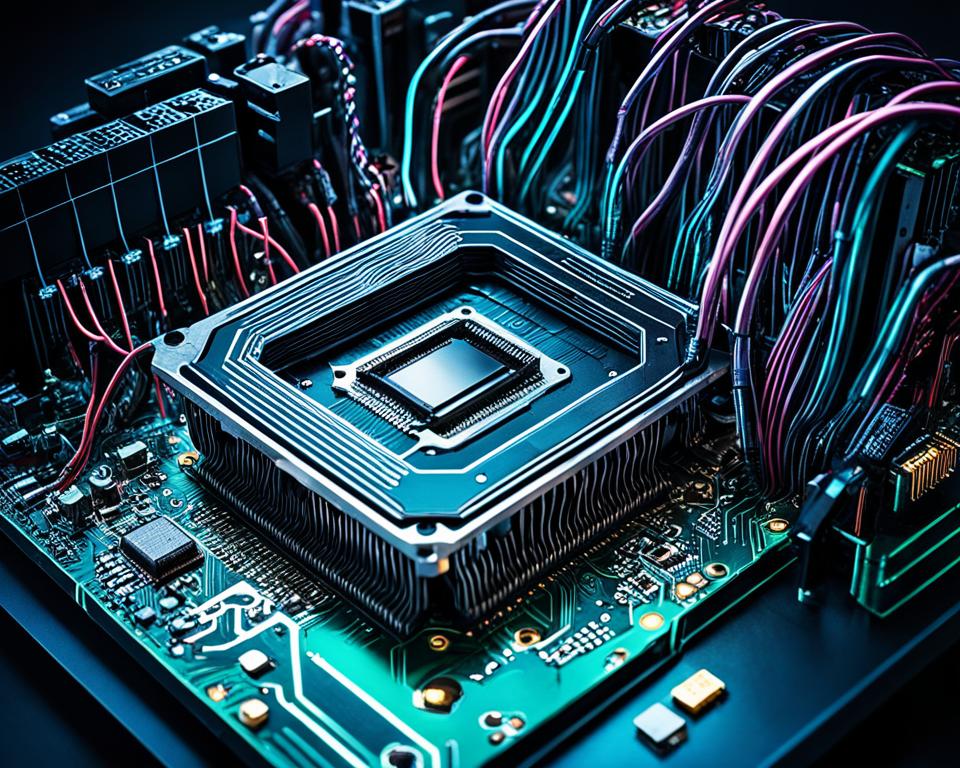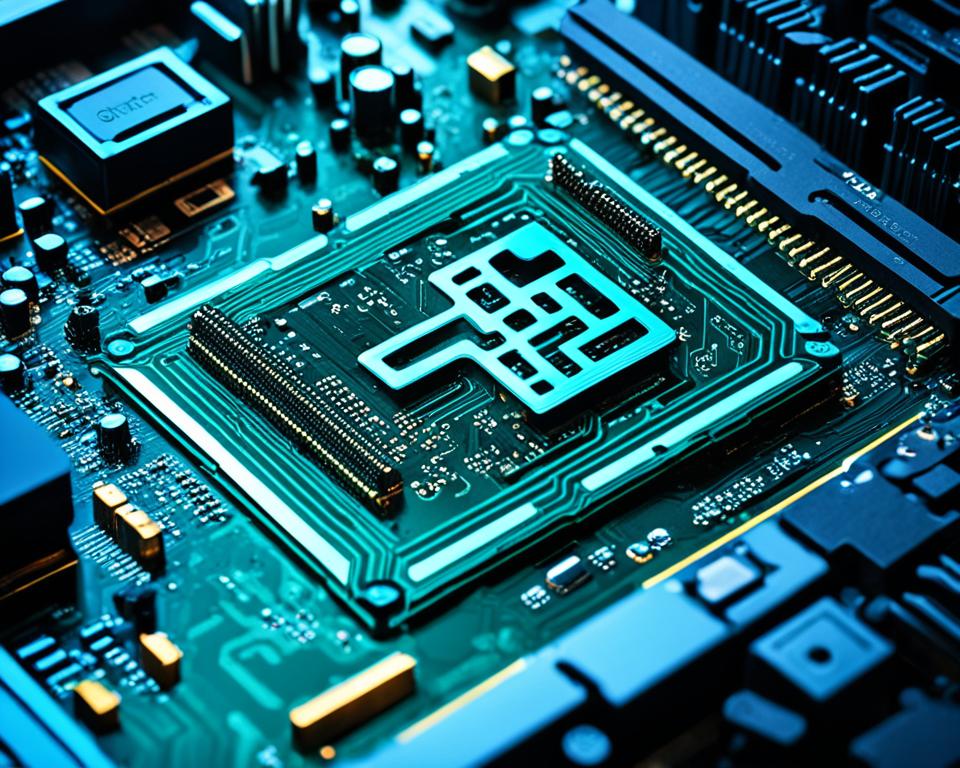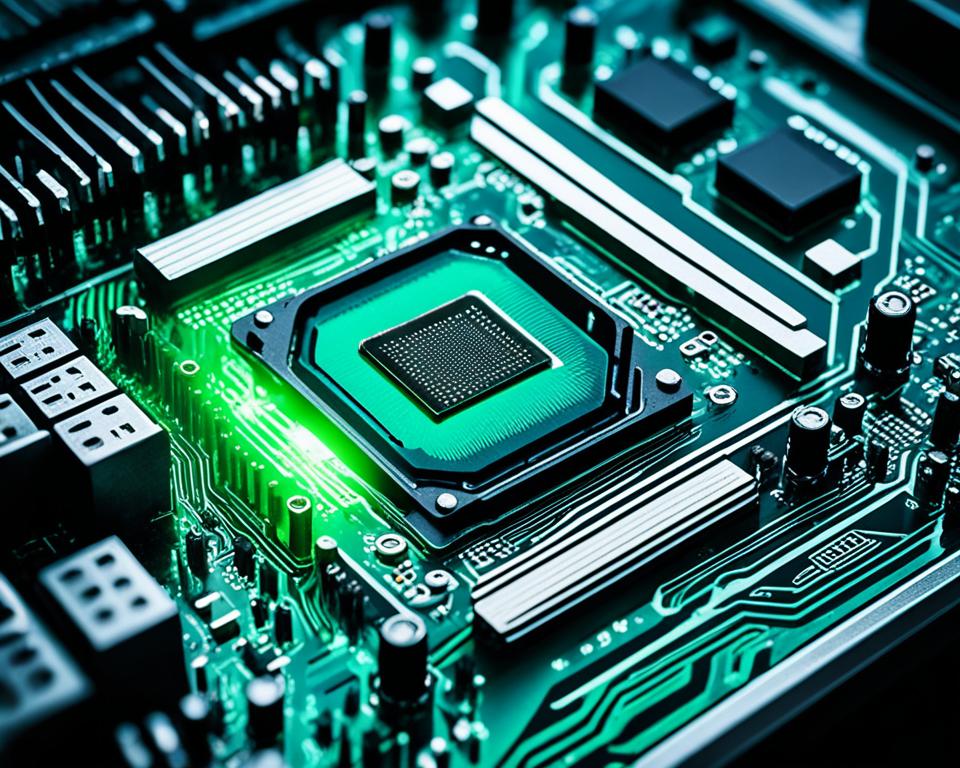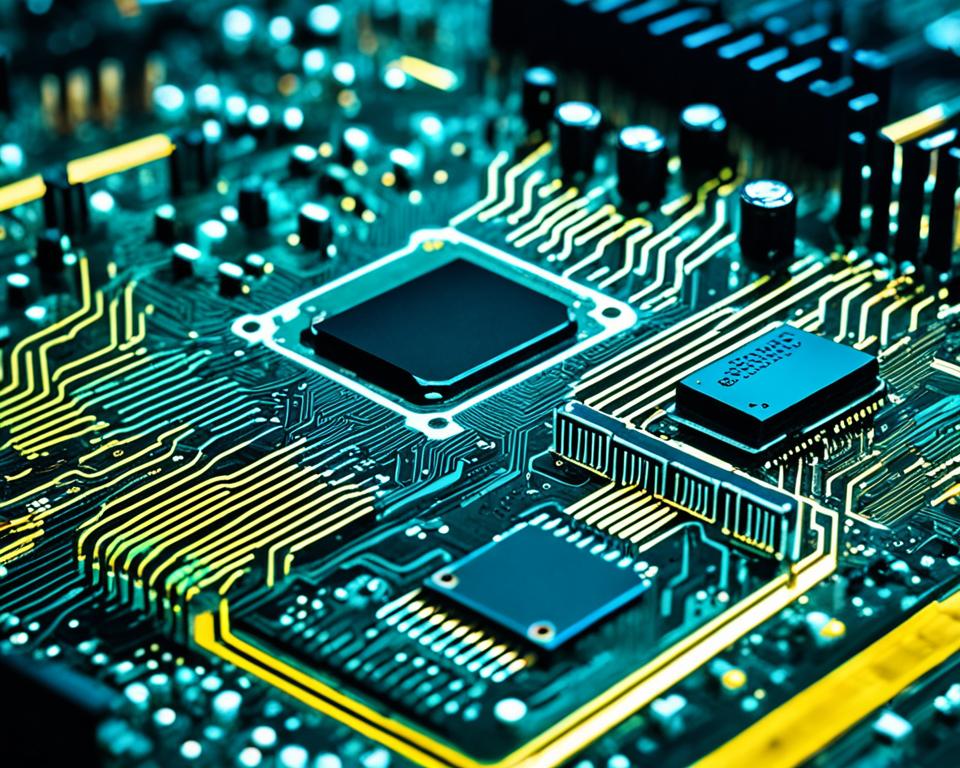When it comes to upgrading your computer’s processor, compatibility is key. Ensuring that your motherboard can support a new processor is essential for a smooth and successful upgrade. But how do you know if your motherboard is compatible? Let me share a story that will shed some light on this important issue.
Meet Mark, an avid gamer and tech enthusiast. Mark decided that it was time to upgrade his computer’s processor to boost his gaming performance. Excited about the possibilities, he purchased a powerful new processor that he had his eye on for a while.
However, when Mark tried to install the new processor into his motherboard, he encountered a problem. The processor didn’t fit. Frustrated and confused, Mark wondered what went wrong.
After some research, Mark realized that his motherboard was not compatible with the new processor. The socket type of the processor didn’t match the socket type of the motherboard. This meant that no matter how much Mark tried, the processor would never fit and work properly.
This experience taught Mark a valuable lesson – checking the compatibility between the motherboard and the processor is crucial before making any upgrades. By doing so, he could have saved himself the disappointment and frustration of encountering compatibility issues.
Key Takeaways:
- Ensuring compatibility between your motherboard and a new processor is essential for a successful upgrade.
- Check the socket type of your motherboard and compare it with the socket type of the processor to ensure physical compatibility.
- Research the chipset compatibility of the motherboard to determine if it can support the desired features and performance of the processor.
- Verify that the BIOS of your motherboard is compatible and has the necessary updates to recognize and support the new processor.
- Consider the Thermal Design Power (TDP) of the processor and ensure it falls within the handling capabilities of your motherboard for stable operation.
Overview of CPU and Motherboard Relationship

The relationship between the CPU and motherboard is crucial for the proper functioning of a computer system. The CPU, or Central Processing Unit, is responsible for executing instructions and processing data. It acts as the brain of the computer, performing all the necessary calculations and operations.
On the other hand, the motherboard serves as the backbone of the computer, connecting all the essential components together. It not only provides the physical platform for the CPU, but also facilitates communication between various hardware components such as the memory, storage devices, and peripheral devices. Without a motherboard, the CPU would not be able to interact with these components effectively.
Ensuring compatibility between the CPU and motherboard is of utmost importance. When it comes to building or upgrading a computer system, choosing a motherboard that supports the specific CPU model is essential for optimal performance, stability, and future upgradability.
“The CPU and motherboard have a symbiotic relationship, where the CPU relies on the motherboard to provide the necessary power and connectivity, while the motherboard depends on the CPU to process instructions and perform tasks.”
It is important to note that not all CPUs are compatible with all motherboards. The compatibility depends on various factors such as the CPU socket type, chipset compatibility, and BIOS support. Each CPU generation may introduce new socket designs, so it is crucial to check the CPU’s specifications and match them with the motherboard requirements.
Additionally, the motherboard’s chipset plays a significant role in determining which CPUs are supported. Different chipsets offer varying levels of support for CPU features such as overclocking and the number of supported cores. Choosing a CPU that is supported by the motherboard’s chipset ensures compatibility and access to desired features.
Furthermore, the motherboard’s BIOS needs to be compatible with the CPU to properly recognize and initialize it during the boot process. Sometimes, a BIOS update may be required to support newer CPU models. Checking the motherboard’s BIOS version and compatibility with the desired CPU is crucial to ensure a successful integration.
Overall, the CPU and motherboard relationship is integral to the efficient operation of a computer system. It is essential to select a compatible CPU and motherboard pairing to achieve optimal performance, system stability, and the possibility for future upgrades.
| Importance of CPU and Motherboard Relationship | Benefits |
|---|---|
| Optimal Performance | Ensures the CPU operates at its maximum potential, allowing for faster and more efficient processing. |
| System Stability | A compatible CPU and motherboard combination minimizes the risk of crashes, freezes, and other stability issues. |
| Future Upgradeability | Choosing a compatible CPU and motherboard allows for easy upgrades in the future, without having to replace the entire system. |
| Enhanced Features and Functionality | CPU and motherboard compatibility ensures access to advanced features and functionalities offered by modern hardware. |
Socket Type

One of the critical factors to consider when determining compatibility between a CPU and motherboard is the socket type. The socket type refers to the physical connection interface that allows the CPU to be securely mounted on the motherboard and establish vital electrical connections.
Both AMD and Intel CPUs utilize different socket types, and each CPU generation may introduce new socket designs. Therefore, it is crucial to ensure that the CPU’s socket type matches the socket type of the motherboard to achieve CPU-motherboard physical compatibility.
Here is a comparison of commonly used CPU socket types:
| CPU Brand | Socket Type |
|---|---|
| AMD | AM4 |
| Intel | LGA 1200 |
As seen in the table and image above, AMD CPUs typically use the AM4 socket type, while Intel CPUs commonly utilize the LGA 1200 socket type. It is essential to determine the socket type requirements of both the CPU and motherboard to ensure a proper fit and establish electrical connections for seamless CPU-motherboard compatibility.
Chipset Compatibility

In order to ensure compatibility between your CPU and motherboard, it is important to consider the chipset of the motherboard. The chipset plays a critical role in determining which CPUs are supported and the level of support they receive. Different chipsets offer varying levels of compatibility and features, such as overclocking support and the number of supported cores.
When choosing a CPU, it is crucial to select one that is supported by the chipset of your motherboard to avoid any compatibility issues. Without proper chipset compatibility, you may not be able to access certain CPU features or fully utilize the capabilities of your processor.
Overclocking support is a key feature to consider when it comes to chipset compatibility. Overclocking allows you to increase the clock speed of your CPU, providing a significant boost in performance. However, not all chipsets support overclocking, so if this is a feature you’re interested in, ensure that the motherboard’s chipset is compatible and offers overclocking support.
To determine the chipset compatibility, you can refer to the motherboard’s documentation or the manufacturer’s website. They will provide you with the necessary information about the chipset and its supported CPUs.
Overall, considering motherboard chipset compatibility is essential in ensuring a smooth and stable operation of your CPU. Be sure to choose a CPU that is supported by your motherboard’s chipset to maximize its features and performance.
BIOS Support

The BIOS (Basic Input/Output System) of a motherboard plays a crucial role in ensuring compatibility with the CPU. It is responsible for recognizing and initializing the CPU during the boot process, allowing the system to function properly. To ensure a smooth installation and operation, it is essential to check the BIOS compatibility and consider potential BIOS updates.
Bios Compatibility
When upgrading a CPU or installing a new one, it is important to ensure that the motherboard’s BIOS is compatible with the desired CPU. BIOS compatibility ensures that the CPU is recognized correctly by the system, allowing it to function optimally. Incompatible BIOS can result in the CPU not being detected or not working to its full potential, leading to reduced performance or even system instability.
Before purchasing a new CPU, it is recommended to check the motherboard manufacturer’s website for information on BIOS compatibility. They often provide lists of compatible CPUs and BIOS updates that enable support for newer CPU models.
“Having a compatible BIOS is essential for a successful CPU upgrade. Without it, the CPU may not be recognized properly, leading to compatibility issues and potential system instability.”
– CPU Expert, Tech Guru
CPU Recognition
The BIOS is responsible for recognizing and identifying the CPU during the boot process. It initializes the CPU and provides the necessary settings for it to operate correctly. A compatible BIOS ensures that the CPU is properly recognized and supported by the motherboard, allowing it to function optimally.
When installing a new CPU, it is important to ensure that the motherboard’s BIOS version is up to date. Older BIOS versions may not have support for newer CPU models, resulting in the CPU not being recognized. In such cases, a BIOS update may be necessary to enable compatibility with the desired CPU.
BIOS Update
In some cases, a BIOS update may be required to support newer CPU models. BIOS updates are typically provided by the motherboard manufacturer and can be downloaded from their official website. These updates introduce new features, bug fixes, and most importantly, compatibility improvements for newer hardware.
Before updating the BIOS, it is crucial to carefully follow the manufacturer’s instructions to avoid any potential issues or errors. It is recommended to have a stable power source and to avoid interrupting the update process, as a failed BIOS update can render the motherboard unusable.
| Benefits of BIOS Update | Considerations |
|---|---|
| Better CPU compatibility | Follow manufacturer instructions |
| Improved system stability | Ensure a stable power source |
| Enhanced performance and functionality | Avoid interrupting the update process |
Importance of CPU-Motherboard Compatibility
CPU-motherboard compatibility is of utmost importance for achieving optimal performance, ensuring system stability, enabling future upgradeability, and accessing enhanced features and functionality. When the CPU and motherboard are well-matched, they form a harmonious partnership that unleashes the full potential of the system.
Having a compatible CPU and motherboard allows the CPU to operate at its maximum potential, delivering the desired speed and performance. It ensures that the system functions smoothly, minimizing any lag or performance bottlenecks that may arise from an incompatible pairing.
Furthermore, a compatible CPU and motherboard combination promotes system stability. The seamless integration between these two critical components helps to prevent crashes, freezes, and other stability issues that could arise from using mismatched parts. This stability is especially crucial for demanding tasks such as gaming, video editing, and 3D rendering, where a stable system can make a significant difference in productivity and user experience.
Choosing a motherboard that is compatible with the CPU also provides future upgradeability. As technology advances, new CPUs with improved performance and features are released. A compatible motherboard ensures that you can easily upgrade your CPU without needing to replace the entire system. This saves both time and money while allowing you to keep up with the latest advancements in computing power.
Moreover, CPU-motherboard compatibility unlocks enhanced features and functionality offered by modern CPUs and motherboards. These features may include support for overclocking, faster memory speeds, increased core counts, and advanced connectivity options. By selecting a compatible CPU and motherboard, you can take advantage of these features to enhance your computing experience and optimize your system’s capabilities.
“CPU-motherboard compatibility is the foundation of a high-performing and stable system, enabling seamless integration, future upgradability, and access to advanced features. It’s essential to carefully consider compatibility when building or upgrading a PC.” – TechExpert Magazine
To illustrate the importance of CPU-motherboard compatibility, consider the following table that highlights the impact of a compatible versus incompatible pairing:
| Compatible Pairing | Incompatible Pairing | |
|---|---|---|
| Performance | Optimal performance achieved | Reduced performance, potential bottlenecks |
| System Stability | High system stability | Potential crashes and instability |
| Future Upgradeability | Easily upgrade CPU without replacing the motherboard | Need to replace motherboard for CPU upgrade |
| Enhanced Features & Functionality | Access to advanced features and functionality | Limited or no access to advanced features |
As evident from the table, ensuring CPU-motherboard compatibility has numerous benefits that contribute to an optimal computing experience. It is crucial to thoroughly research and consider compatibility factors when selecting the CPU and motherboard to build or upgrade your system.
When CPU and motherboard are compatible, you can unlock the full potential of your system, achieving optimal performance, stability, and future upgradeability. Don’t overlook the importance of CPU-motherboard compatibility – it’s the foundation for a reliable and high-performing PC.
Understanding CPU Compatibility
CPU compatibility is a critical factor to consider when choosing a new processor for your computer. It involves several key elements, including the socket type, generation and model, and TDP (Thermal Design Power).
The socket type refers to the physical connection between the CPU and motherboard. It’s crucial to ensure that the socket type of your chosen processor matches the socket type supported by your motherboard. A mismatch in socket types will render the CPU incompatible and prevent it from being installed.
The generation and model of the CPU are also important considerations. Different generations of CPUs may introduce architectural changes and varying levels of performance. It’s necessary to check whether your chosen processor’s generation and model are supported by your motherboard’s chipset and BIOS. This ensures proper functionality and compatibility.
Lastly, the TDP of a CPU is an essential factor to consider. TDP refers to the amount of heat that a CPU generates under maximum load. It’s crucial to select a CPU with a TDP that falls within the handling capabilities of your motherboard. Choosing a CPU with a higher TDP than what your motherboard can handle can lead to overheating and instability.
To summarize, CPU compatibility involves matching the socket type, ensuring support for the CPU’s generation and model by the motherboard’s chipset and BIOS, and considering the TDP to ensure proper heat management. By taking these factors into account, you can make an informed decision and ensure a compatible and efficient CPU-motherboard pairing.
| Factor | Description |
|---|---|
| Socket Type | Determines physical compatibility between the CPU and motherboard |
| Generation and Model | Must be supported by the motherboard’s chipset and BIOS |
| TDP | Should be within the motherboard’s handling capabilities |
Best Practices for CPU Compatibility
- Research and confirm the socket type of your motherboard
- Verify that the CPU’s generation and model are supported by the motherboard
- Consider the TDP of the CPU to ensure proper heat management
- Consult the manufacturer’s documentation and compatibility lists
- Update the motherboard’s BIOS if necessary
“Choosing a compatible CPU is crucial for optimal performance and stability. Always double-check the socket type, generation and model, and TDP requirements to ensure a seamless CPU-motherboard integration.”
Researching the Socket Type
When it comes to determining CPU compatibility, the first step is to research and identify the socket type of your motherboard. The socket type refers to the physical design and configuration of the CPU socket on the motherboard. Different CPU socket types are designed to accommodate specific CPU models and generations.
To find out the socket type of your motherboard, you can refer to the manufacturer’s website or consult the product manual. These resources typically provide detailed information about the socket type supported by the motherboard.
Once you have identified the socket type, you can start researching and finding compatible CPUs. It is crucial to ensure that the CPU you choose not only matches the socket type of your motherboard but also is supported by the motherboard’s chipset and BIOS.
| Socket Type | Supported CPUs |
|---|---|
| Socket AM4 | AMD Ryzen processors |
| LGA 1151 | Intel 8th and 9th generation processors |
| Socket TR4 | AMD Threadripper processors |
Table: Examples of CPU Socket Types and Supported CPUs
By researching the socket type, you can ensure that the CPU you select is compatible with your motherboard, allowing for a smooth and successful upgrade or build.
Checking CPU Generation and Model
When it comes to determining CPU compatibility, the generation and model of the processor play a vital role. Each CPU generation introduces architectural changes and performance improvements, making it crucial to choose a CPU that aligns with your motherboard’s specifications. This ensures optimal performance, system stability, and future upgrade possibilities.
To verify motherboard compatibility, it is essential to check the CPU’s generation and model against the supported CPU generations listed by the motherboard manufacturer. Most manufacturers provide compatibility lists on their websites, which outline the specific CPUs that are compatible with each motherboard model.
| CPU Generation | Compatible Motherboard Models |
|---|---|
| 8th Generation | Model X, Model Y, Model Z |
| 9th Generation | Model A, Model B, Model C |
| 10th Generation | Model P, Model Q, Model R |
It is important to note that not all CPUs within a generation may be compatible with a specific motherboard model. Some higher-end CPUs may require a motherboard with enhanced power delivery capabilities or a more feature-rich chipset. Referencing the compatibility list, in conjunction with the CPU’s generation and model, will help ensure a seamless integration and compatibility between your CPU and motherboard.
If you are uncertain about your CPU’s compatibility or unable to find the necessary information, reaching out to the motherboard manufacturer’s customer support can provide you with further clarification and guidance.
Example Use Case – Intel Core i7-9700K Processor:
The Intel Core i7-9700K is a 9th generation processor that delivers exceptional performance for gaming and other demanding tasks. To determine its compatibility, you can refer to the motherboard’s compatibility list or the manufacturer’s website to check if it is supported. For example, the ASUS ROG Strix Z390-E Gaming motherboard supports the i7-9700K as indicated on ASUS’s compatibility list. Ensuring that your CPU generation, model, and motherboard align will guarantee a smooth and reliable computing experience.
By taking the necessary steps to verify the CPU generation and model compatibility, you can confidently choose a processor that will seamlessly integrate with your motherboard, unlocking the full potential of your system.
Considering TDP Requirements
The Thermal Design Power (TDP) of a CPU is a crucial factor to consider when ensuring stable and reliable operation of your computer system. TDP refers to the amount of heat generated by the CPU under maximum load conditions. Choosing a CPU with a TDP that exceeds the handling capabilities of your motherboard can lead to overheating and system instability.
To avoid these issues, it is essential to check the TDP range supported by your motherboard before selecting a CPU. The motherboard’s TDP handling capabilities determine its ability to dissipate heat efficiently and maintain stable operation. Selecting a CPU with a TDP that falls within the supported range ensures optimal performance and reliable functionality.
Here is an example of a table to help you understand the TDP requirements of your CPU and motherboard:
| Motherboard Model | Supported TDP Range |
|---|---|
| ASUS ROG Strix Z390-E Gaming | 95W – 165W |
| GIGABYTE B450 AORUS Elite | 65W – 105W |
| MSI MPG X570 Gaming Edge WiFi | 105W – 180W |
When selecting a CPU for your system, check the TDP specification provided by the CPU manufacturer to ensure compatibility with your motherboard’s TDP handling capabilities. Choosing a CPU with a TDP that falls within the supported range will help maintain stable operation and prevent issues related to overheating or system instability. Always refer to the motherboard’s documentation or manufacturer’s website for specific TDP compatibility information.
Common Issues with Incompatible CPUs and Motherboards
Incompatible CPU and motherboard pairings can result in several problems and hinder the optimal functioning of your computer system. These issues can manifest in failure to boot, system instability, reduced performance, and overheating. It is crucial to ensure compatibility between your CPU and motherboard to avoid encountering these common issues.
“Failure to boot can be a frustrating experience, leaving you unable to access your system. Incompatible CPUs and motherboards may not properly communicate with each other, preventing the system from starting up.”
System instability is another consequence of incompatible CPU and motherboard combinations. The compatibility issues can result in crashes, freezes, or unexpected system reboots, disrupting your workflow and compromising the overall experience.
Reduced performance is a common consequence of using an incompatible CPU and motherboard. When the components are not well-matched, the system may not be able to fully leverage the CPU’s capabilities, leading to sluggish performance and a noticeable decrease in efficiency.
Overheating is a critical issue that can arise when the CPU and motherboard are not compatible. Inadequate power delivery or poor heat dissipation can cause the system to generate excessive heat, potentially damaging the components and affecting the stability of the entire system.
To avoid these issues, it is essential to conduct thorough research and verify the compatibility between your chosen CPU and motherboard before making a purchase. Understanding the socket type, chipset compatibility, and BIOS support are crucial in ensuring a successful and efficient pairing.
By prioritizing CPU-motherboard compatibility, you can prevent these common issues, ensuring optimal performance, system stability, and improved overall functionality.
Identifying Motherboard Compatibility
When it comes to upgrading your computer’s processor, it is essential to ensure compatibility with your motherboard. To identify whether your motherboard supports a new processor, you need to determine the manufacturer and model of your motherboard. This information can usually be found on the motherboard’s packaging, in the product manual, or through the System Information tool on your computer.
Once you have identified the manufacturer and model, you can refer to the motherboard’s socket type. The socket type is an important factor in determining CPU compatibility. Different socket types are used by different CPU manufacturers, such as AMD and Intel. By matching the socket type of your motherboard with the supported socket types of the CPU, you can determine compatibility.
In addition to socket type, motherboard manufacturers often provide CPU support lists. These lists outline the specific processors that are compatible with your motherboard. It is crucial to check this list to ensure compatibility and avoid any potential issues. By cross-referencing the CPU support list and the socket type, you can confidently identify compatible CPUs for your motherboard.



